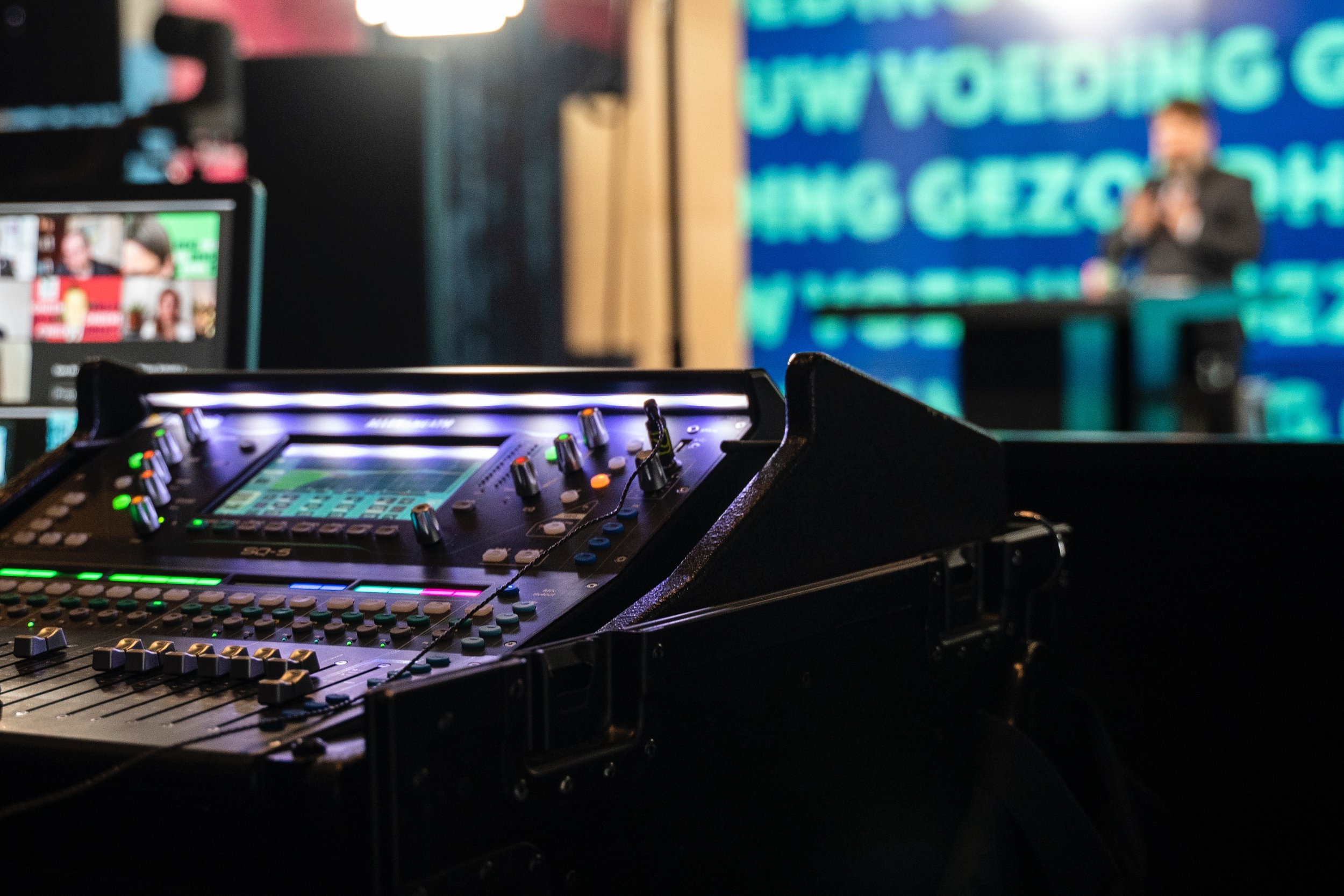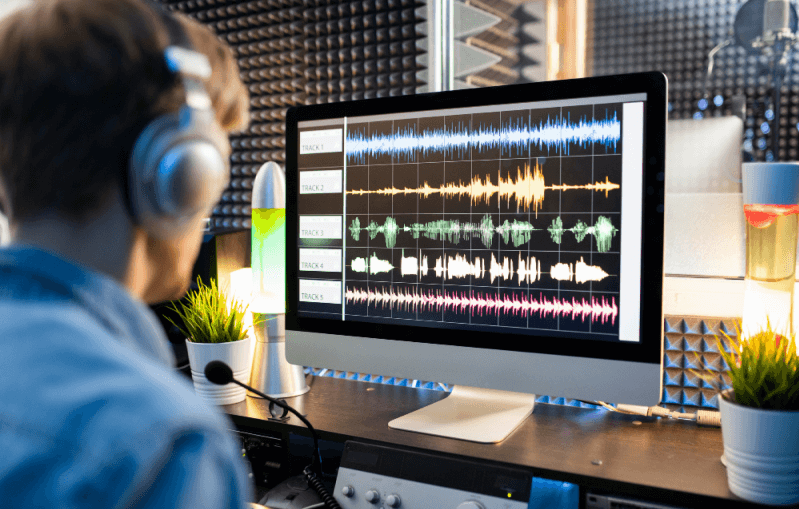How to get the most out of modern gatherings with audio visual charlotte nc
Recognizing the Inclusion of Audio Visual Technology in Today's Educational Environments
The integration of audio-visual innovation in academic setups has changed the training and learning procedure. Educators now have accessibility to devices that satisfy different discovering designs, boosting pupil involvement and collaboration. The unification of these innovations presents both possibilities and obstacles. Comprehending just how to successfully execute these devices is crucial. What techniques can teachers utilize to maximize the benefits of audio-visual innovation in their class?
The Evolution of Audio-Visual Modern Technology in Education And Learning
As educational needs progressed over the decades, audio-visual technology went through significant transformations that improved the learning environment. Originally, devices such as movie projectors and slide programs were the primary ways of incorporating aesthetic aspects right into class. These very early innovations provided instructors with the ability to existing details dynamically, yet they were restricted in accessibility and interactivity.
With the arrival of videotape recorder in the 1970s, classrooms began to integrate recorded lessons, widening the extent of instructional sources. The introduction of desktop computers in the 1980s further changed this landscape, permitting the development of multimedia presentations and interactive knowing experiences.
The rise of the internet in the 1990s marked a zero hour, making it possible for real-time accessibility to a wealth of audio-visual materials. Today, electronic devices such as interactive whiteboards and on the internet learning systems remain to improve the educational experience, fostering interaction and collaboration among students.
Benefits of Audio-Visual Devices for Diverse Learning Styles
Audio-visual tools play a necessary function in accommodating varied discovering styles by improving aesthetic knowing and improving auditory involvement. By including pictures, video clips, and sound, these modern technologies produce a more inclusive instructional setting. This multifaceted method permits educators to address the different preferences and requirements of trainees properly.
Enhancing Visual Discovering
Interaction in the learning process is significantly boosted through the usage of audio-visual devices, dealing with various learning designs. These tools, such as videos, infographics, and interactive presentations, give aesthetic stimuli that aid comprehension and retention. Visual students, in specific, take advantage of the consolidation of photos and animations, which can streamline complicated principles and enhance understanding. Furthermore, audio-visual sources can illustrate real-world applications, making discovering more pertinent and appealing. By integrating color, movement, and noise, instructors can produce a dynamic discovering environment that records trainees' interest and promotes much deeper cognitive connections. Ultimately, the strategic usage of audio-visual modern technology not just supports visual understanding yet likewise enhances the overall instructional experience for varied students.
Improving Auditory Involvement
A substantial advantage of integrating audio-visual devices in education and learning is their capacity to boost acoustic engagement among students. These devices, which include multimedia presentations, podcasts, and interactive sound components, satisfy different learning styles, particularly benefiting acoustic learners (audio visual charlotte nc). By integrating sound and narration, instructors can develop immersive experiences that capture trainees' attention and enhance comprehension. This interaction is necessary, as it promotes a much deeper understanding of the product and promotes retention. Additionally, audio-visual tools can assist in joint understanding environments, urging students to participate in discussions and share their understandings. Eventually, the unification of audio-visual innovation not just sustains acoustic engagement but likewise enhances the total academic experience, making finding out more dynamic and reliable for all trainees
Enhancing Interaction Via Interactive Discovering

In addition, gamification elements, such as tests and simulations, can boost inspiration and retention, making discovering more pleasurable and reliable. These strategies not only boost cognitive involvement yet additionally provide to varied knowing styles, ensuring that all students can take part meaningfully. As an outcome, interactive learning atmospheres cultivate a sense of area and belonging, eventually bring about improved academic results. Via the assimilation of audio aesthetic technology, teachers can change traditional classrooms right into lively areas where pupils grow and proactively shape their academic trips.
Linking Theory and Exercise With Multimedia Resources
Multimedia sources work as an important web link between academic concepts and functional application in educational settings. By improving engagement, assisting in joint knowing experiences, and supporting varied learning styles, these devices create a much more comprehensive and vibrant discovering atmosphere - audio visual charlotte nc. This method not only promotes much deeper understanding however likewise prepares pupils for real-world difficulties

Enhancing Involvement Via Multimedia
Interaction in instructional settings substantially enhances when trainers incorporate multimedia resources right into their teaching approaches. The use of video clips, podcasts, and interactive discussions improves the learning experience, allowing trainees to connect with the material on several levels. Multimedia sources satisfy numerous learning styles, giving aesthetic, auditory, and kinesthetic stimuli that can hold trainees' interest more effectively than conventional lecture methods. In addition, these sources can streamline complicated principles, making them much more available and unforgettable. By incorporating multimedia, teachers can develop a dynamic class setting that promotes curiosity and inspires students. Inevitably, the strategic use audio-visual modern technology offers to connect the gap in between theoretical knowledge and functional application, enriching the academic experience for both trainers and students.
Assisting In Collaborative Discovering Experiences
Numerous research studies suggest that joint understanding experiences significantly boost student end results when integrated with multimedia sources. Multimedia tools assist in communication among trainees, allowing them to take part in analytic and crucial thinking jointly. By using video conferencing, collaborative platforms, and interactive presentations, instructors create atmospheres helpful to synergy and shared learning. These modern technologies enable students to interact their ideas effectively and receive instant feedback, fostering a much deeper understanding of the subject issue. Furthermore, multimedia sources can present intricate concepts in more digestible styles, advertising discussion and partnership. Therefore, the combination of joint knowing and audio-visual technology not just enhances the academic experience but additionally prepares trainees for real-world synergy dynamics, highlighting the relevance of collaboration and cumulative expertise building and construction.
Sustaining Diverse Knowing Styles
While standard training methods usually accommodate a minimal variety of learning choices, the integration of audio-visual innovation supplies an extra comprehensive approach to education and learning. By using multimedia sources such as video clips, interactive simulations, and electronic discussions, educators can attend to different learning styles, consisting of aesthetic, acoustic, and kinesthetic. This versatility enables set apart instruction, making it possible for students to engage with material in means that resonate with their private choices. In addition, audio-visual tools can assist in deeper understanding by giving multiple representations of complicated ideas. As a result, pupils that may deal with conventional approaches can discover different pathways to success, fostering an extra fair knowing environment that supports academic success for all learners.
Obstacles in Carrying Out Audio-Visual Modern Technology
Although audio-visual modern technology holds fantastic promise for boosting instructional experiences, its execution often experiences significant challenges. One primary concern is the economic concern connected with purchasing and keeping such equipment, which can strain budget plans, especially in underfunded institutions. Additionally, poor training for instructors can hinder efficient combination, leaving them ill-prepared to use the technology completely. Technical problems, such as software malfunctions and compatibility issues, may likewise interfere with lessons and frustrate both teachers and pupils. Varying degrees of student accessibility to innovation outside the class can create disparities in finding out possibilities. Lastly, the potential for over-reliance on modern technology may diminish essential mentor methods, eventually restricting the academic experience. Addressing these challenges requires a complete method, consisting of ample funding, professional growth, and equitable access to sources, to assure that audio-visual innovation can be leveraged properly in today's educational setups.
Ideal Practices for Integrating Technology in the Classroom

Additionally, fostering an interactive setting with collective devices encourages pupil involvement and participation. Utilizing varied audio-visual resources caters to different discovering designs, accommodating aesthetic, auditory, and kinesthetic learners. Routinely assessing the effect of modern technology on student understanding aids teachers improve their techniques and adapt to altering requirements. Involving trainees in the selection of modern technology promotes possession and motivation. By adhering to these best practices, teachers can develop a vibrant classroom atmosphere that effectively incorporates technology and boosts the educational their explanation experience for all trainees.
The Future of Audio-Visual Modern Technology in Education
As additional reading classrooms significantly welcome innovation, the landscape of audio-visual devices in education remains to advance (audio visual charlotte nc). Future innovations are anticipated to focus on higher interactivity and personalization, allowing teachers to tailor learning experiences to specific pupil demands. Innovations such as enhanced fact (AR) and virtual truth (VR) will likely supply immersive understanding atmospheres, boosting pupil engagement and understanding
Artificial knowledge (AI) is poised to play a considerable function in audio-visual technology by offering real-time responses and adaptive knowing paths. This assimilation may aid instructors recognize and attend to pupil challenges much more effectively. Cloud-based platforms will promote much easier access to resources and partnership among students and educators, regardless of place.
Along with these technological advancements, professional development for educators will certainly be essential, guaranteeing they are outfitted to utilize these tools effectively. On the whole, the future of audio-visual technology in education assures to produce even more vibrant, inclusive, and impactful understanding experiences.
Regularly Asked Inquiries
How Can Educators Pick the Right Audio-Visual Equipment for Their Classrooms?
Picking proper audio-visual tools needs teachers to analyze their academic objectives, consider pupil needs, assess available innovation, and look for referrals from peers or specialists, guaranteeing devices effectively boost learning and interaction within their specific classroom setting.
What Spending plan Factors to consider Are There for Applying Audio-Visual Technology?
Budget plan factors to consider for implementing audio-visual technology consist of first purchase costs, maintenance expenses, training for team, and potential software licensing costs. Furthermore, lasting financial investment in updates and replacements should additionally be factored into financial planning.
Exist Certain Training Resources for Educators on Audio-Visual Tools?
Several institutions provide training sources for instructors on audio-visual devices, consisting of on-line programs, workshops, and instructional guides. These sources aim to boost teachers' skills and self-confidence in successfully incorporating technology into their mentor techniques.
Exactly how Do We Measure the Performance of Audio-Visual Innovation in Knowing?
Measuring the efficiency of audio-visual technology in finding out involves reviewing student involvement, comprehension, retention prices, and general scholastic performance. Studies, assessments, and empirical studies can give beneficial Continued insights right into its impact on academic end results.
What Prevail Mistaken Beliefs Regarding Audio-Visual Modern Technology in Education?
Common mistaken beliefs concerning audio-visual technology in education consist of the idea that it guarantees interaction and finding out end results, as well as the assumption that all trainees profit just as, forgeting specific discovering choices and needs.